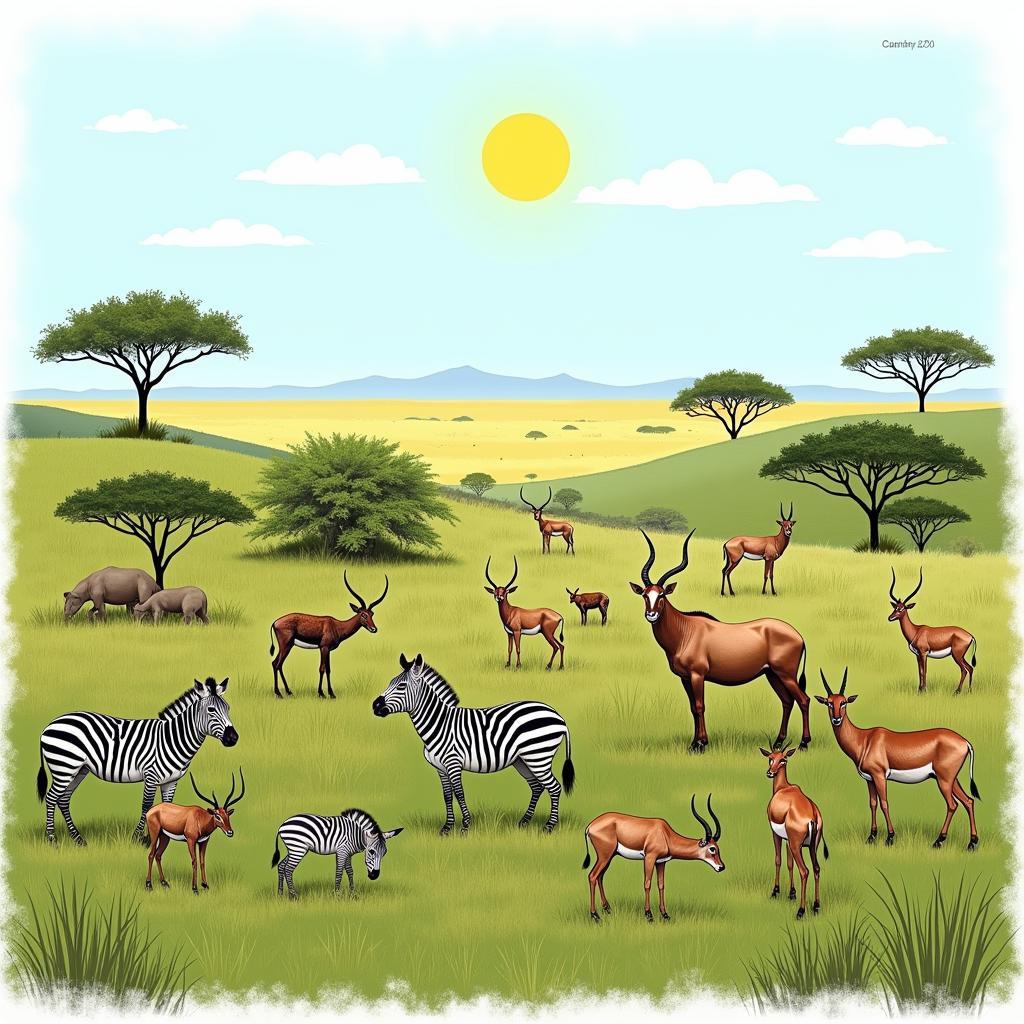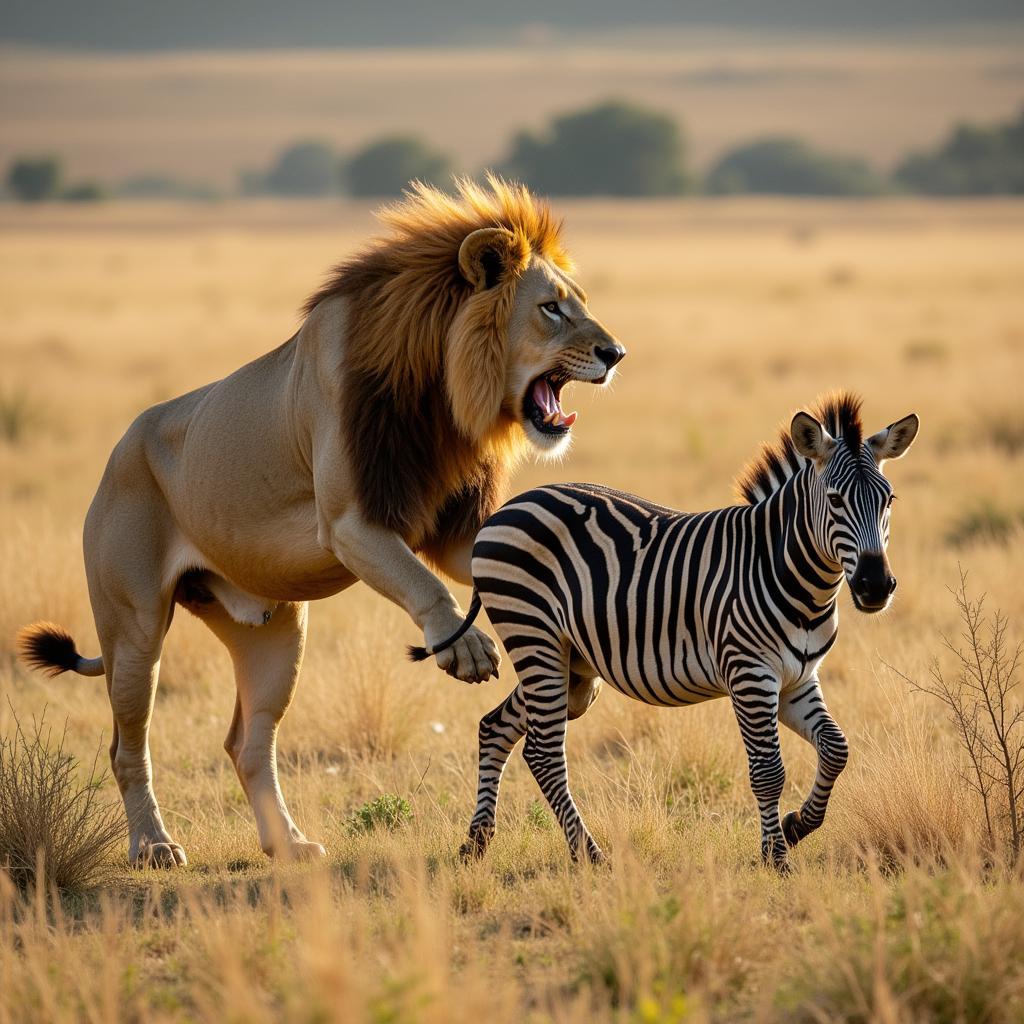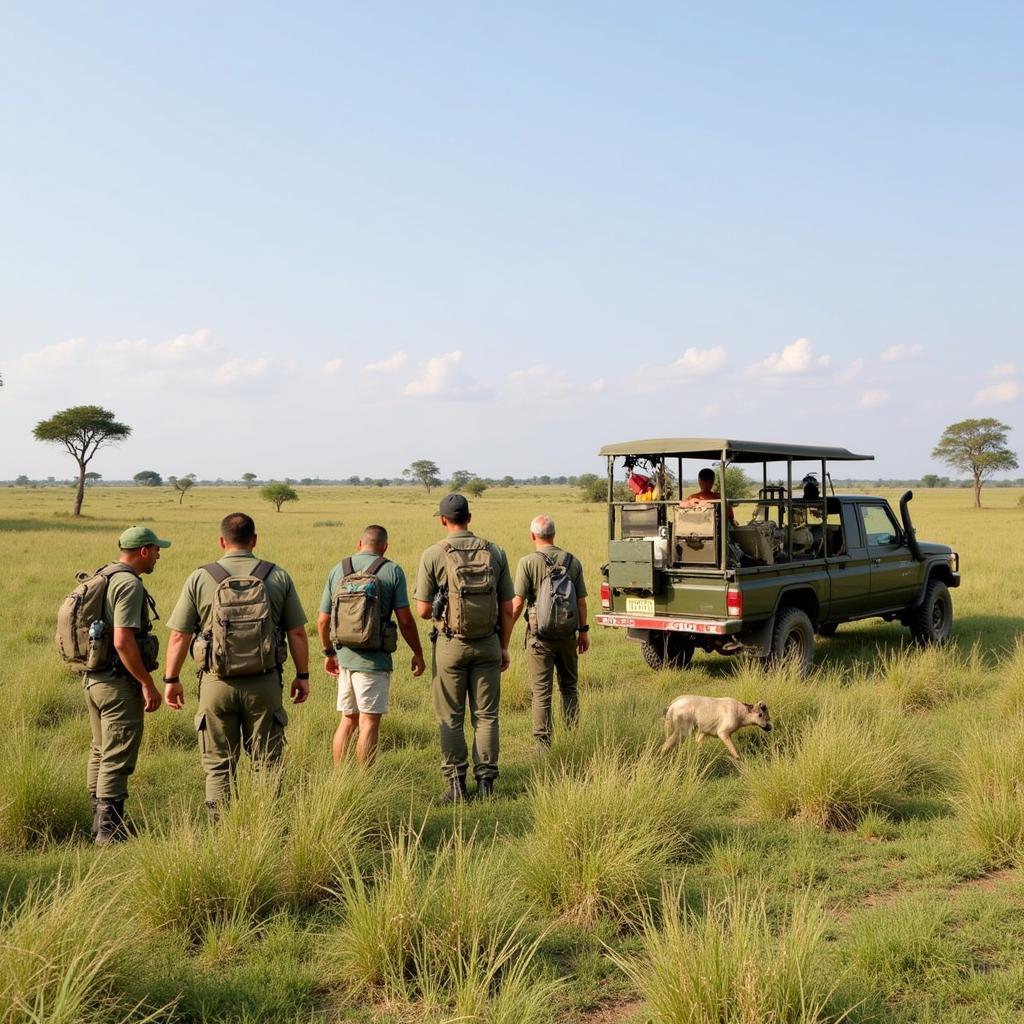Exploring the African Grassland Food Chain
The African Grassland Food Chain is a complex web of life, a delicate balance between predator and prey, grazer and grass. This fascinating ecosystem supports a diverse range of species, each playing a crucial role in maintaining its intricate harmony. From the smallest insects to the largest mammals, every organism contributes to the cycle of life and death that defines the African grasslands.
Understanding the Basics of the African Grassland Food Chain
A food chain depicts the flow of energy from one organism to another. In the African grasslands, the foundation of this chain is the abundant plant life, including grasses, shrubs, and trees. These primary producers harness the sun’s energy through photosynthesis, converting it into usable energy for other organisms. The African grass rat, for example, feeds on these plants. This positions it as a primary consumer within the ecosystem.
After the initial introduction to the food chain, it’s vital to explore the role of herbivores like the African buffalo. These animals, with their specialized digestive systems, consume vast quantities of plant matter, forming the next link in the chain. They, in turn, become prey for larger predators, such as the African lion.
 African Grassland Food Chain: Producers and Consumers
African Grassland Food Chain: Producers and Consumers
The Role of Predators in the African Grassland Ecosystem
Predators, such as lions, leopards, and cheetahs, occupy the top tier of the African grassland food chain. These apex predators play a critical role in regulating populations of herbivores, preventing overgrazing and maintaining the balance of the ecosystem. The African lion, with its powerful hunting prowess, is a keystone species, influencing the dynamics of the entire food web.
 African Grassland Food Chain: Predators in Action
African Grassland Food Chain: Predators in Action
While predators like the African lion receive considerable attention, the role of smaller carnivores, such as jackals and hyenas, should not be overlooked. These scavengers play a vital role in cleaning up carcasses, preventing the spread of disease, and recycling nutrients back into the ecosystem. Furthermore, they often prey on smaller animals, adding another layer of complexity to the food web.
Threats and Conservation Efforts
The African grassland food chain, like many ecosystems worldwide, faces numerous threats. Habitat loss due to human encroachment, climate change, and poaching are all contributing to the decline of various species. The African black footed squirrel, for instance, is affected by habitat loss. Protecting the intricate balance of the African grassland food chain is essential for the survival of these remarkable species and the preservation of biodiversity. Conservation efforts, including habitat restoration, anti-poaching initiatives, and sustainable land management practices, are crucial for ensuring the future of these iconic landscapes.
 African Grassland Food Chain: Conservation Efforts
African Grassland Food Chain: Conservation Efforts
Conclusion
The African grassland food chain is a marvel of nature, a complex tapestry of interconnected lives. From the smallest blade of grass to the mightiest lion, each organism plays a vital role in maintaining the balance of this unique ecosystem. Protecting the African grassland food chain is not just about saving individual species; it’s about safeguarding the future of a vital part of our planet. Understanding this intricate web of life is crucial for developing effective conservation strategies and ensuring the continued prosperity of this incredible ecosystem.
FAQ
- What is the primary source of energy in the African grassland food chain? (Plants)
- Name a keystone predator in the African grassland ecosystem. (African lion)
- What role do scavengers play in the food chain? (Cleaning carcasses and recycling nutrients)
- How does habitat loss threaten the food chain? (By reducing resources and disrupting animal populations)
- What are some examples of conservation efforts in African grasslands? (Habitat restoration, anti-poaching, sustainable land management)
- What is the role of the African buffalo in the food chain? (Herbivore, consuming vast quantities of plant matter)
- How does the African black footed squirrel fit into the food chain? (Primary consumer, feeding on plants)
Scenarios
- Scenario 1: A drought significantly reduces plant growth. How might this impact different levels of the food chain?
- Scenario 2: A disease decimates the lion population. How would this affect the herbivore populations and the overall ecosystem?
Further Exploration
Explore related articles on our website about the African buffalo, the African black footed squirrel, the African lion, the African grass rat, and African jungle flowers to learn more about specific species within this fascinating ecosystem.
Need assistance? Contact us 24/7: Phone: +255768904061, Email: [email protected], Address: Mbarali DC Mawindi, Kangaga, Tanzania.




